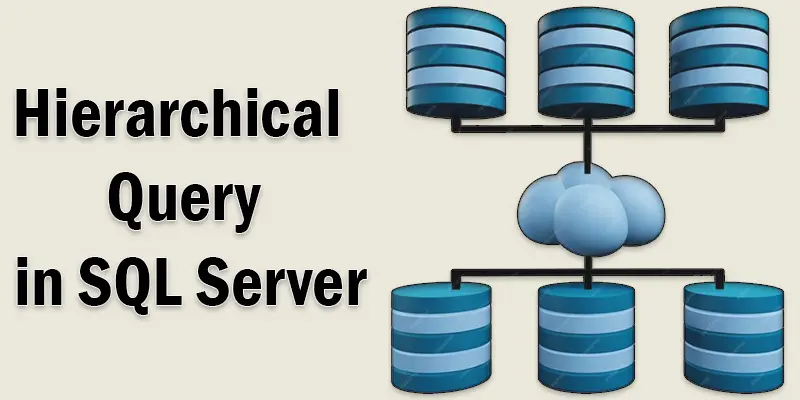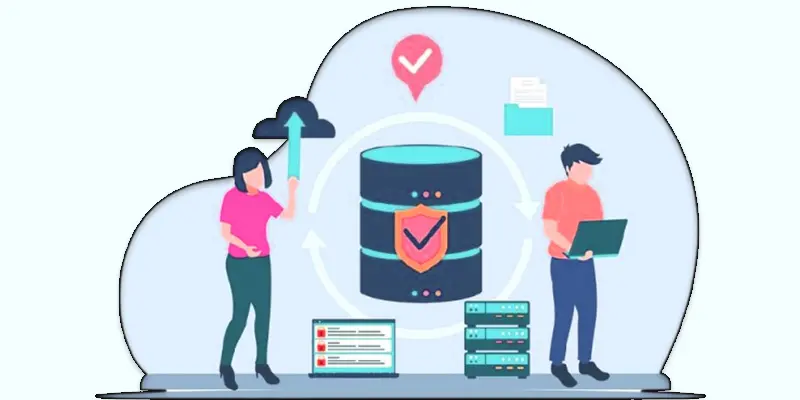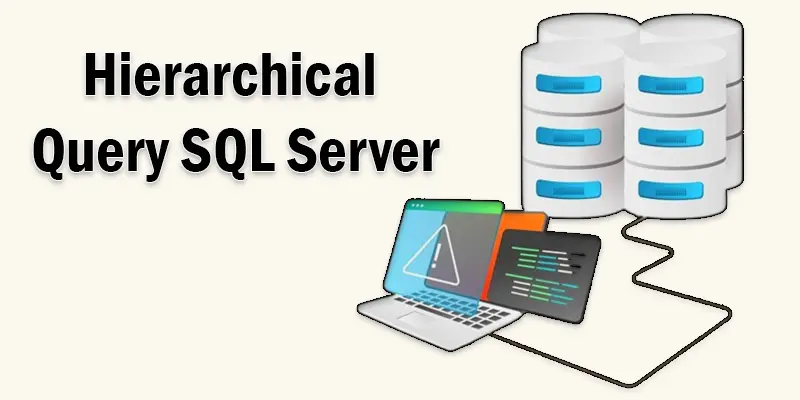Hierarchical Data: Query Methods, Real-Life Examples & More
Published: 26 Apr 2025
Hierarchical Query in SQL Server
Hierarchical data is everywhere—in organizational charts, file systems, and product categories. But how do you efficiently retrieve such data in SQL Server? Many beginners struggle with writing queries that handle parent-child relationships properly. Without the right approach, managing hierarchical structures can become complex and slow. In this guide, we’ll explore how Hierarchical Query in SQL Server works, using CTEs and hierarchyid, to simplify data retrieval and improve performance.
Understanding Hierarchical Data
What is Hierarchical Data?
Hierarchical data represents relationships where one item is the parent of another, creating a tree-like structure. Common examples include organizational charts (CEO → Managers → Employees), file systems (Folders → Subfolders → Files), and product categories (Electronics → Mobiles → Accessories).
In databases, managing hierarchical data can be challenging because SQL is designed for relational data, where tables are linked using foreign keys. However, SQL Server provides tools like Recursive CTES and the hierarchyid data type to efficiently store and query hierarchical relationships. Understanding these methods helps in handling complex data structures with ease.

How is Hierarchical Data Stored in Databases?
Since SQL databases are designed for relational data, storing hierarchical data requires special techniques.
- Self-Referencing Tables (Adjacency List Model) – A table has a column that references itself (e.g., an Employee table where each employee has a ManagerID).
- Nested Set Model – Uses left and right values to define hierarchical levels, making reads fast but updates complex.
- Materialized Path – Stores the full path of each node as a string (e.g., CEO/Manager1/Employee2).
- Hierarchyid Data Type – A built-in SQL Server data type designed to handle hierarchical relationships efficiently.
Common Challenges in Querying Hierarchical Data
- Performance Issues – Recursive queries can slow down when dealing with large datasets.
- Complex Queries – Writing SQL to retrieve parent-child relationships can be difficult for beginners.
- Managing Depth Levels – Some models don’t handle deep hierarchies well, requiring additional logic.
- Data Integrity – Without proper constraints, incorrect relationships may be stored, causing inconsistencies.
Methods to Query Hierarchical Data in SQL Server
SQL Server offers different ways to handle hierarchical data, each with its own advantages and use cases. The two most common methods are Recursive Common Table Expressions (CTES) and the hierarchyid data type.
Applying Common Table Expressions (CTES) Recursively
By continually referencing itself, a recursive CTE is an effective method for navigating hierarchical data. It starts with a base case, which is the top-level (or root) record, and then recursively retrieves child records until no more are found. This method is useful for querying multi-level relationships, such as organizational structures, product categories, or file systems.
How It Works
- A base query selects the root node (e.g., a CEO in an employee hierarchy).
- A recursive query joins the table to itself, fetching child records.
- The recursion continues until all levels of the hierarchy are retrieved.
- The final output displays the entire hierarchy in a structured manner.
Pros
- Simple and easy to implement.
- Suitable for dynamic hierarchies where depth levels are unknown.
Cons
- Can be slow on large datasets if not optimized.
- Requires recursion, which may impact performance for very deep structures.
Using the hierarchyid Data Type
Hierarchyid is a built-in data type in SQL Server designed specifically for hierarchical structures. Instead of using recursion, it assigns a unique identifier to each record based on its position in the hierarchy. This makes searching and retrieving hierarchical relationships more efficient.
How It Works
- Each record gets a hierarchyid value, which defines its position.
- Special functions (GetAncestor(), GetDescendant(), IsDescendantOf()) help navigate relationships.
- This approach allows quick lookups and efficient sorting within a hierarchy.
Pros
- More efficient than recursive queries for deep hierarchies.
- Built-in functions simplify navigation between parent and child records.
Cons
- More complex to set up compared to CTEs.
- Not as flexible for ad-hoc queries as Recursive CTEs.
Which Method Should You Use?
Use Recursive CTEs when the hierarchy depth is unknown or changes frequently. Use hierarchyid when dealing with large and complex hierarchies where performance is a priority.
Performance Optimization Tips for Hierarchical Queries in SQL Server
Efficiently querying hierarchical data in SQL Server requires proper optimization techniques.
Use Indexing for Faster Lookups
- Create indexes on key columns used in hierarchical queries, such as parent-child relationships.
- If using the hierarchyid data type, create an index on the hierarchyid column to speed up lookups and sorting.
Optimize Recursive CTE Queries
- Limit recursion depth to prevent unnecessary processing and avoid infinite loops.
- Use the OPTION (MAXRECURSION N) clause to control recursion depth and avoid performance issues.
- Select only the required columns instead of using SELECT * to reduce data load.
Use hierarchyid for Deep Hierarchies
- Hierarchyid is faster than Recursive CTES for deeply nested structures.
- Use the GetAncestor(), GetDescendant(), and IsDescendantOf() functions for efficient traversal.
Avoid Overuse of Joins in Recursive Queries
- Joins in recursive queries can slow down performance when dealing with large datasets.
- Instead of multiple joins, use temporary tables or indexed views to store intermediate results.
Batch Processing for Large Hierarchies
- If working with millions of records, process data in batches instead of executing a single, long-running query.
- Use pagination techniques to retrieve hierarchical data in chunks.
Use Proper Data Modeling
- Choose the right storage model (Adjacency List, Nested Set, Materialized Path, or hierarchyid) based on your use case.
- Normalize data where needed, but avoid excessive normalization that complicates queries.
Monitor Query Performance with Execution Plans
- Use EXPLAIN or SQL Server Execution Plan to analyze query performance.
- Identify bottlenecks such as missing indexes, excessive recursion, or slow joins.

Real-Life Examples & Use Cases of Hierarchical Queries in SQL Server
Hierarchical queries are widely used in various applications where data is structured in parent-child relationships.
Organizational Structure (Employee Hierarchy)
- Companies use hierarchical data to store employee relationships.
- Example: A CEO oversees department heads, who manage team leaders, who supervise employees.
- Querying the hierarchy helps retrieve all employees under a manager or find the chain of command.
File System (Folders & Files)
- Operating systems organize files in a hierarchical format:
- Example: C:UsersDocumentsProjectsReport.docx
- SQL Server can store and query these structures efficiently, showing all files within a folder or the full path of a file.
Product Categories in E-Commerce
- Online stores structure products in nested categories.
- Example:
Electronics → Mobiles → Smartphones → Accessories
- Hierarchical queries help in retrieving all products under a category or displaying category breadcrumbs.
Menu Structures in Websites & Applications
- Websites and applications have nested navigation menus.
- Example:
Home → Services → Web Development → E-commerce Solutions
- Hierarchical queries allow dynamic menu rendering based on stored relationships.
Company Asset Management
- Businesses track assets in a hierarchical way.
- Example:
Company → Departments → Equipment → Components
- Queries help in retrieving assets by department or tracking which equipment belongs to which unit.
Social Media Comments & Replies
- Platforms like Facebook or Reddit use nested comments.
- Example:
A post → Comment 1 → Reply 1.1 → Reply 1.1.1
- Hierarchical queries enable threaded discussions and fetching all replies for a comment.
Geographical Data (Countries, States, Cities)
- Location-based databases use hierarchical structures.
- Example:
Continent → Country → State → City → Zip Code
- Hierarchical queries help in finding all cities within a state or retrieving the full location path.
Common Mistakes & How to Avoid Them in Hierarchical Queries
Hierarchical queries can become inefficient or complex if not implemented correctly.
Not Using Indexes for Faster Queries
Without proper indexing, hierarchical queries can become slow when dealing with large datasets. Solution: Create indexes on parent-child relationship columns or use indexed hierarchyid for efficient lookups.
Using SELECT Instead of Selecting Specific Columns
Fetching all columns (SELECT *) increases query time and memory usage. Solution: Select only the required columns to improve performance.
Uncontrolled Recursion in CTES
Recursive CTES can lead to infinite loops or exceed system limits. Solution: Use the OPTION (MAXRECURSION N) clause to limit recursion depth and prevent excessive execution.
Choosing the Wrong Hierarchical Storage Model
Using adjacency lists for deep hierarchies can be inefficient. Solution: Choose the best model based on query performance needs (Adjacency List, Nested Set, Materialized Path, or hierarchyid).
Ignoring Performance Bottlenecks in Execution Plans
Running hierarchical queries without analyzing execution plans can result in slow performance. Solution: Use SQL Server Execution Plan to identify and fix bottlenecks like missing indexes or excessive scans.
Not Optimizing Large Hierarchies
Running a single query on millions of hierarchical records can overload the system. Solution: Use batch processing, pagination, or caching techniques for large datasets.
Using Too Many Joins in Recursive Queries
Excessive joins in recursive queries can slow down execution. Solution: Instead of deep joins, store intermediate results in temporary tables for better performance.
Failing to Handle Orphan Records
If a parent record is deleted, its child records may become orphaned in the hierarchy. Solution: Use ON DELETE CASCADE or manually handle orphaned records to maintain data integrity.

Conclusion About Hierarchical Data
We’ve covered Hierarchical Query in SQL Server in detail. Understanding hierarchical data and using the right querying methods can improve database performance and simplify data retrieval. I personally recommend using hierarchyid for deep hierarchies and indexed CTES for better efficiency. Always optimize queries by selecting only necessary columns and monitoring execution plans. If you found this guide helpful, start practicing with real-world scenarios and share your experience in the comments!
FAQS Hierarchical Query SQL Server
SQL has several types of queries, including SELECT (obtaining information), INSERT (adding information), UPDATE (changing information), DELETE (deleting information), and JOIN (combining tables). There are also DDL (Data Definition Language) queries like CREATE, ALTER, and DROP for managing database structures. Advanced queries include hierarchical queries, aggregate functions, and stored procedures for complex operations.
An example of hierarchical data is an employee reporting structure in a company. A CEO has multiple managers under them, and each manager has employees reporting to them. Other examples include file systems, product categories, and family trees.
To handle hierarchy in SQL Server, you can use Recursive CTES, hierarchyid, or other storage models like Adjacency List or Nested Sets. These methods help retrieve parent-child relationships efficiently. Choosing the right approach depends on your data structure and performance needs.
In SQL Server, you can create a hierarchy by adding a Parent-Child relationship column in a table. Using Recursive CTES or hierarchyid, you can efficiently query and manage hierarchical relationships. This helps in organizing complex data structures like organizations or geographical locations.

- Be Respectful
- Stay Relevant
- Stay Positive
- True Feedback
- Encourage Discussion
- Avoid Spamming
- No Fake News
- Don't Copy-Paste
- No Personal Attacks

- Be Respectful
- Stay Relevant
- Stay Positive
- True Feedback
- Encourage Discussion
- Avoid Spamming
- No Fake News
- Don't Copy-Paste
- No Personal Attacks





